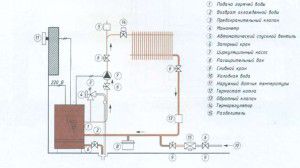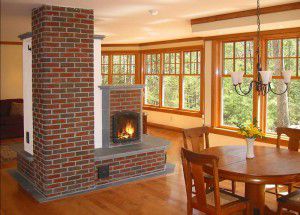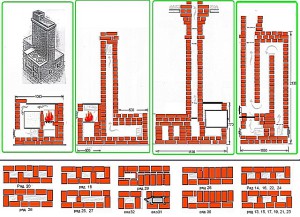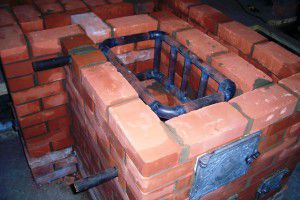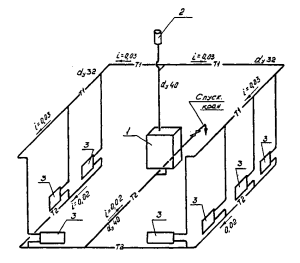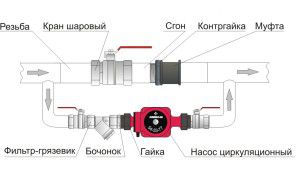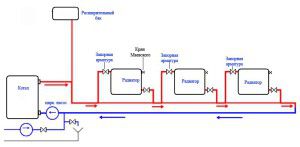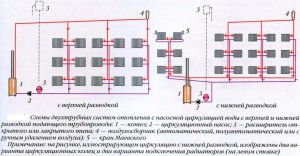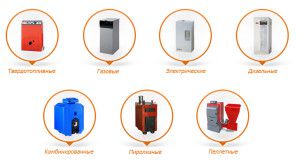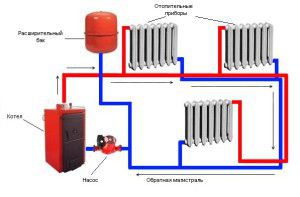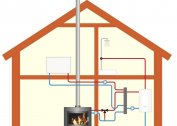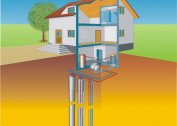At first glance, the organization of a heat supply system for a one-story house should not be very difficult. Therefore, little attention is paid to it. But if you approach this issue without the proper professionalism, problems are possible in the future. Therefore, it is necessary to choose which DIY heating system for a one-story private house, schemes and accessories will be optimal in a particular case.
Features of the organization of heating a one-story house
Already at the first stage, the owner of the building may encounter some problems. The first of them is the choice of the optimal heat supply scheme. Most often, water heating is organized in a one-story private house. But there are other options for maintaining optimal indoor temperature.
Why does the choice of one or another source of air heating depend on? First of all, from the availability of energy. A professional project of a one-story house with stove heating should take into account not only the correct stove, but also the uniform distribution of heat throughout the building, as well as a place to store firewood or coal.
The property owner, before doing the heating of a one-story house with his own hands, must solve the following issues:
- Choose a source of thermal energy - stove, fireplace, water or electric heating.
- In the case of water, choose the optimal piping layout.
- Calculate the power and thermal load on the system. Without this, heating in a one-story private house with your own hands will be ineffective. Energy costs may be exceeded or the temperature in the building may not be high enough.
The difficulty of choosing often lies in a small budget. But even with this, the water heating scheme of a one-story house must meet modern requirements and standards.
Before installing the system, it is recommended that the building be insulated. Then a one-story house with stove heating will have minimal heat loss, which will reduce costs.
Stove heating of a one-story house
Despite the possibility of installing full-fledged water heating in a one-story private house, in some cases the choice stops at the stove. With proper organization, it will fulfill all its functions. But for this it is necessary to think over all the elements of the system.
The owner’s primary concern is to decide whether the surface of the furnace will be the only source of heat. This option is exemplary only if the house has a small area of up to 60 m². In this case, projects of a one-story house with stove heating are selected, where a brick structure is laid. With the correct installation pattern, the air in the room will be heated from the surface of the furnace, which has a fairly large area. In addition, a complex system of smoke channels is arranged to receive heat from them.
If these measures are not enough, you can install a heat exchanger in the furnace furnace. Thus, a two-pipe or one-pipe heating system for a one-story house is organized, where the main source of heating of the coolant is the furnace.
When choosing such a scheme, you may encounter the following difficulties:
- Incorrectly calculated heat output of the furnace, volume and location of the heat exchanger.As a result, the water in the pipes will either overheat or have insufficient temperature;
- Large volume oven. Considering that in this case, the layout of the heating layout of a one-story house will take up little space, but the stove will significantly reduce the living area of the building;
- Low system efficiency.
Installation in a one-story house of furnace heating in most cases is carried out only if there is already a finished structure. This entails a reduction in costs - no need to purchase a ready-made stove. If it is not, they prefer not to make a one-story house with heating from the stove. It is much more efficient to use modern boilers - solid fuel, gas or electric.
In the project of a one-story house with furnace heating, the diameter of the chimney should be at least 100 mm. This is due to the large amount of carbon monoxide. Otherwise, the draft will be low, which will affect the combustion process.
The choice of a scheme for water heating at home
Installing water heating is considered one of the best ways to maintain a comfortable temperature in the house. At the same time, the owner has a choice - a two-pipe heating system of a one-story house or a one-pipe analog. You also need to consider other nuances of organizing this type of heat supply.
First you need to decide whether it will be a heating scheme for a one-story house with natural circulation or forced. In the first case, the movement of the coolant is due to its thermal expansion. This method is relevant only for small heating circuits. If the total area of the house exceeds 60 m² - installation of a circulation pump is recommended.
In this case, there will be no problems that water heating of a one-story house with natural circulation has:
- Uneven heat distribution across radiators and batteries;
- Mandatory installation of pipes of large diameters (40 mm) to reduce losses due to friction of water on the inner surface of the highway;
- Inertia of the system. Long heating time due to a slow increase in the temperature of the coolant.
However, the heating scheme of a one-story private house with a pump also has one drawback - the dependence on electricity. But in this case, with the correct piping of the pump, you can easily make a heating scheme for a one-story house with natural circulation.
If you need constant operation of the pump, you can add an uninterruptible power supply to the system.
For water heating a one-story house with natural circulation, it is best to choose steel pipes with a diameter of 36 to 40 mm. Alas, on the market it is difficult to find plastic counterparts with the same dimensions.
One-pipe heating distribution in a one-story house
This is one of the most economical ways of heating. The advantage of a one-pipe heating system for a one-story house is the installation of only one main line, to which radiators and batteries are connected in series.
In this case, you must take into account the features of this wiring diagram. It is sold in houses with a small area. If the total length of the highway exceeds 30m, then it is not recommended to install a one-pipe heating system for a one-story building. The coolant will cool down, reaching the last radiators in the chain. Circuits with a circulation pump have a slightly greater maximum length - up to 50 m.
What should be taken into account during the design of one-pipe heating in a one-story private house with your own hands?
- Possibility of laying pipes in inaccessible places;
- For the gravitational system, it is imperative to observe the slope of the mains. It should be 3-4 mm per 1 m. pipelines;
- The minimum number of rotary and separation nodes.This will reduce the hydraulic resistance when moving the coolant.
When installing radiators for heating a one-story house with your own hands, you need to do bypasses.
In addition to these factors, the boiler should be correctly positioned relative to other heating devices. It should be at the lowest point in the system.
The total length of the riser from the boiler should be at least 2 meters. This component is necessary only for heat supply schemes of a one-story house with natural circulation.
Two-pipe house heat supply scheme
Almost all heating schemes for a one-story house with a double-circuit boiler are implemented on the basis of a two-pipe system. It differs from the above by the presence of a second main, along which the cooled coolant flows. It is connected to the boiler return pipe for re-heating the water.
In this water heating scheme of a one-story house, radiators are connected in parallel. Those. from the supply line to each device, a connecting pipe is allocated. A similar system is characterized by such features of operation and design:
- The increase in the number of consumables for the installation of the return pipe;
- Uniform thermal distribution across all radiators;
- The ability to repair or replace the battery without shutting down the entire system;
- With the correct calculation of the heating scheme of a one-story house with a double-circuit boiler, you can increase the length of the system by installing new pipes and radiators. But at the same time, the power of the boiler should provide the proper level of heating of the coolant.
For a two-pipe heating system of a one-story house, the calculation of the main parameters - the diameter of the pipes, hydraulic and thermal distribution - is necessarily performed. Without this, the system may not work efficiently.
For gravity and enclosed heating circuits, an expansion tank is required. It differs in the installation location and design depending on the type of water heat supply in a one-story private house.
Choosing a heating boiler for a one-story house
The next important stage in planning the layout of heating circuits for a single-story house is the selection of a boiler. It should provide heating of water in the pipes and at the same time have a high coefficient of efficiency.
If the one-story house will not be equipped with stove heating, it is necessary to choose the optimal type of boiler. Currently, manufacturers offer several types of this equipment, which differ in the energy used, equipment and functionality. Consider the main criteria for choosing a boiler for the proper organization of heating in a one-story private house with your own hands:
- Type of fuel used - gas, coal, firewood, diesel fuel, pellets. It depends on the availability and cost of each type of energy carrier;
- Equipment. The most rational are the heat supply schemes of a one-story house with a double-circuit boiler. It includes not only an expansion tank and a circulation pump, but also provides hot water supply. However, the cost of such equipment is much higher than that of simple solid fuel boilers;
- Mounting type - wall or floor. Gas boilers of relatively low power (up to 30 kW) can be installed on the wall. All solid fuel models are only available in the floor version.
An important factor is the cost of equipment. It should be borne in mind that in the heating scheme of a one-story private house, a pump is needed if it is not in the boiler equipment.
| Model | Boiler type | power, kWt | Cost, rub. |
| BAXI MAIN 5 14F | Gas wall | 14 | 36480 |
| NOVELLA AVTONOM 24 RAG | Gas floor | 24 | 75940 |
| PROTHERM 30 NL | Solid + liquid fuel | 30 | 48290 |
| WIRBEL GS 04 | Solid fuel | 24 | 84520 |
| RusNIT 224 | Electric | 24 | 26740 |
In practice, both gas and solid fuel boiler models can be used to organize the heat supply of a one-story house with their own hands. It all depends on the availability of energy.
For solid fuel boilers, a separate room with forced circulation is required. Flammable materials, including fuel, cannot be stored in it.
Pipes, expansion tank and heating system accessories
In addition to boilers, any mandatory components must be present in any water heating scheme of a single-story house. These include pipes, radiators, safety groups, expansion tanks.
The choice of elements directly depends on the pipe layout, the method of movement of the coolant (gravity or forced), as well as the budget for the organization of heat supply. Consider the minimum system configuration for heating schemes of a one-story private house with a pump and a two-pipe pipe layout:
- Pipes. For forced circulation, polypropylene models of diameters from 16 to 24 mm can be used. In the gravitational system, this indicator should be at least 369 mm. Therefore, for her, steel pipelines would be the best option;
- Expansion tank. For water heating of a one-story house with natural circulation, this is an ordinary tank with two connection pipes. It is installed in the highest part of the circuit. In closed systems, diaphragm expansion tanks are used that are mounted on the return pipe in front of the circulation pump;
- Security group - selection and installation of the air vent and drain valve. Mandatory components for closed heat supply, in which the pressure is not equal to atmospheric.
In addition to these elements, others may be provided in the circuit. In particular, valves. It is necessary to limit the flow of coolant in certain areas of the system. To optimize the heating of radiators, thermostats are mounted. Mandatory in the strapping of batteries should be installed cranes Majewski. They are designed for the timely removal of air from the heating system.
If all of the above options are unacceptable - you can consider installing a film of electric heating or convectors. They are relevant for single-story houses with non-permanent residence. Despite the high maintenance costs (cost of electricity), electric heating is characterized by low inertia and independence from the initial temperature in the room.
The video shows a diagram of the organization of one-pipe heating of a one-story house:
